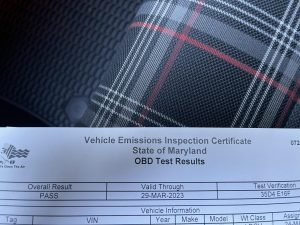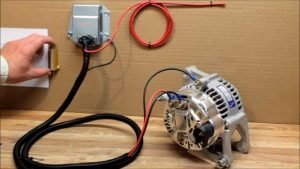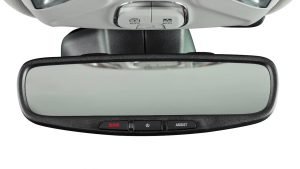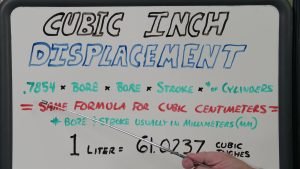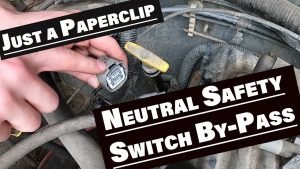
Contents
How to Remove Scratches from Car Paint Without Buffing: A Detailed Guide
Dreaded scratches on your car’s paint? Don’t panic! While buffing is a popular method, you can often remove light scratches without resorting to power tools. This guide provides a gentle, DIY approach to restoring your car’s shine. This method is best for very fine scratches, not deep gouges or chips. For significant damage, professional help is recommended.
🛒 Recommended Product
Understanding Scratch Severity:
Before you begin, it’s crucial to assess the scratch’s depth. A light scratch only affects the clear coat, and is usually easily removable. A deeper scratch penetrates the clear coat and into the paint itself, requiring more effort or potentially professional repair. If you can feel the scratch with your fingernail, it’s likely too deep for this method.
Step-by-Step Guide to Scratch Removal Without Buffing:
-
Wash and Dry Thoroughly: Start with a meticulously clean car. Wash your car using a car wash soap and a soft sponge or wash mitt. Rinse thoroughly and dry completely with a microfiber towel. This removes any loose dirt or debris that could worsen the scratch during the cleaning process.
-
Assess the Scratch Again: With a clean, dry surface, re-evaluate the scratch’s depth. This is crucial for determining if this method is appropriate.
-
Prepare Your Workspace: Find a shaded area to work in to avoid direct sunlight, which can cause the cleaning solutions to dry too quickly.
-
Gentle Cleaning: Use a microfiber cloth dampened with clean water, carefully wiping the area around the scratch. Avoid scrubbing! The goal is to clean the area, not to further damage the paint.
-
Apply a Scratch Remover: Many specialized cleaning solutions are designed to fill in minor scratches. Apply a small amount according to the product’s instructions.
-
Let It Sit: Allow the cleaning solution to dwell on the scratch for the recommended time. This varies based on the product, so always check the instructions carefully.
-
Gently Wipe Away: Using a clean, dry microfiber cloth, gently wipe away the cleaning solution. Use a back-and-forth motion, not circular. This helps avoid further spreading the scratch.
-
Inspect the Results: Check for any remaining scratches. You may need to repeat steps 5-7 if necessary. Avoid excessive rubbing.
-
Wax or Sealant (Optional): Once you’re satisfied, consider applying a wax or sealant to protect the repaired area and add a layer of shine. This step can also help to conceal any remaining minor imperfections.
Tips for Success:
- Patience is Key: This process takes time. Don’t rush it!
- Less is More: Use small amounts of any cleaning solution to avoid over-application.
- Microfiber Towels are Your Friend: Microfiber towels are much gentler on car paint than other types of cloths.
- Cleanliness is Paramount: Make sure your hands, cloths, and work area are clean.
- Test in an Inconspicuous Area: Before applying any cleaning solution to the visible scratch, test it on a small, hidden area of your car’s paint to ensure compatibility.
Common Mistakes to Avoid:
- Using Abrasive Cleaners: Harsh chemicals or abrasive cleaners can worsen the scratches.
- Scrubbing Too Hard: Gentle pressure is crucial. Excessive rubbing will damage the paint further.
- Ignoring the Scratch Depth: Attempting this method on deep scratches will likely be ineffective and possibly cause more damage.
- Working in Direct Sunlight: Direct sunlight can cause the cleaning solution to dry too quickly, hindering its effectiveness.
By following these steps and avoiding common mistakes, you can successfully remove light scratches from your car’s paint without the need for buffing. Remember to always prioritize a gentle touch and patience for best results. If unsure, seek professional help from a detailer.
🛒 Recommended Product
FAQ
Q. Can I remove minor scratches from my car paint without using a buffer?
A. Yes, you can! For very light scratches that only affect the clear coat, methods like using a scratch remover pen, rubbing compound (applied by hand), or even a DIY paste made from baking soda and water can often be effective without resorting to a buffer. However, deeper scratches may require more aggressive techniques.
Q. What are some DIY methods to remove scratches without buffing?
A. Besides baking soda and water paste (which should be used cautiously), you can try using a specialized car scratch remover pen designed for light scratches. These often contain fine abrasives to smooth out the scratch. A high-quality car wash and thorough clay bar treatment can also help remove minor surface imperfections.
Q. My scratch is quite noticeable. Can I still avoid buffing?
A. For deeper scratches that penetrate beyond the clear coat, it’s unlikely you’ll be able to completely remove them without buffing or professional intervention. While hand-applied rubbing compounds might improve their appearance, they likely won’t completely eliminate the damage.
Q. What products should I avoid when attempting to remove scratches without buffing?
A. Avoid harsh chemicals or abrasive cleaners not specifically designed for car paint. Using the wrong products can cause more damage than the original scratch. Also, avoid excessive pressure when applying any cleaning or polishing agents by hand, as this can also lead to further damage.
Q. How can I prevent future scratches on my car paint?
A. Regular washing and waxing helps protect your car’s paint. Parking in garages or covered areas minimizes sun and weather exposure. Using a quality car cover can further protect against dust and scratches. Being mindful of your surroundings when parking and driving also plays a crucial role in preventing scratches. Consider installing clear bra paint protection film on vulnerable areas like the hood and bumpers.
Q. My scratch is accompanied by paint discoloration. Should I attempt a DIY fix?
A. Paint discoloration, especially if significant, usually indicates damage beyond what can be fixed with simple DIY methods. Professional paint repair or touch-up is usually necessary to restore the original color and finish. Attempting a DIY fix on significant paint damage might make it worse and result in an uneven finish.
Related Articles
How to Replace Windshield Wipers on a Car
How to Replace Your Car’s Windshield Wipers: A Step-by-Step Guide Rain, snow, sleet, or even just a light mist – your windshield wipers are your…
How to Clean Leather Car Seats Properly
How to Clean Leather Car Seats Properly: A Step-by-Step Guide Leather car seats add a touch of luxury and sophistication to your vehicle. But to keep …
How to Keep Your Car Clean with Kids Inside
How to Keep Your Car Clean with Kids Inside: A Parent’s Guide to a Tidy Ride Life with kids is messy, and that mess often finds its way into you…
Affiliate Disclosure: As an Amazon Associate, I earn from qualifying purchases made through links on this site.




